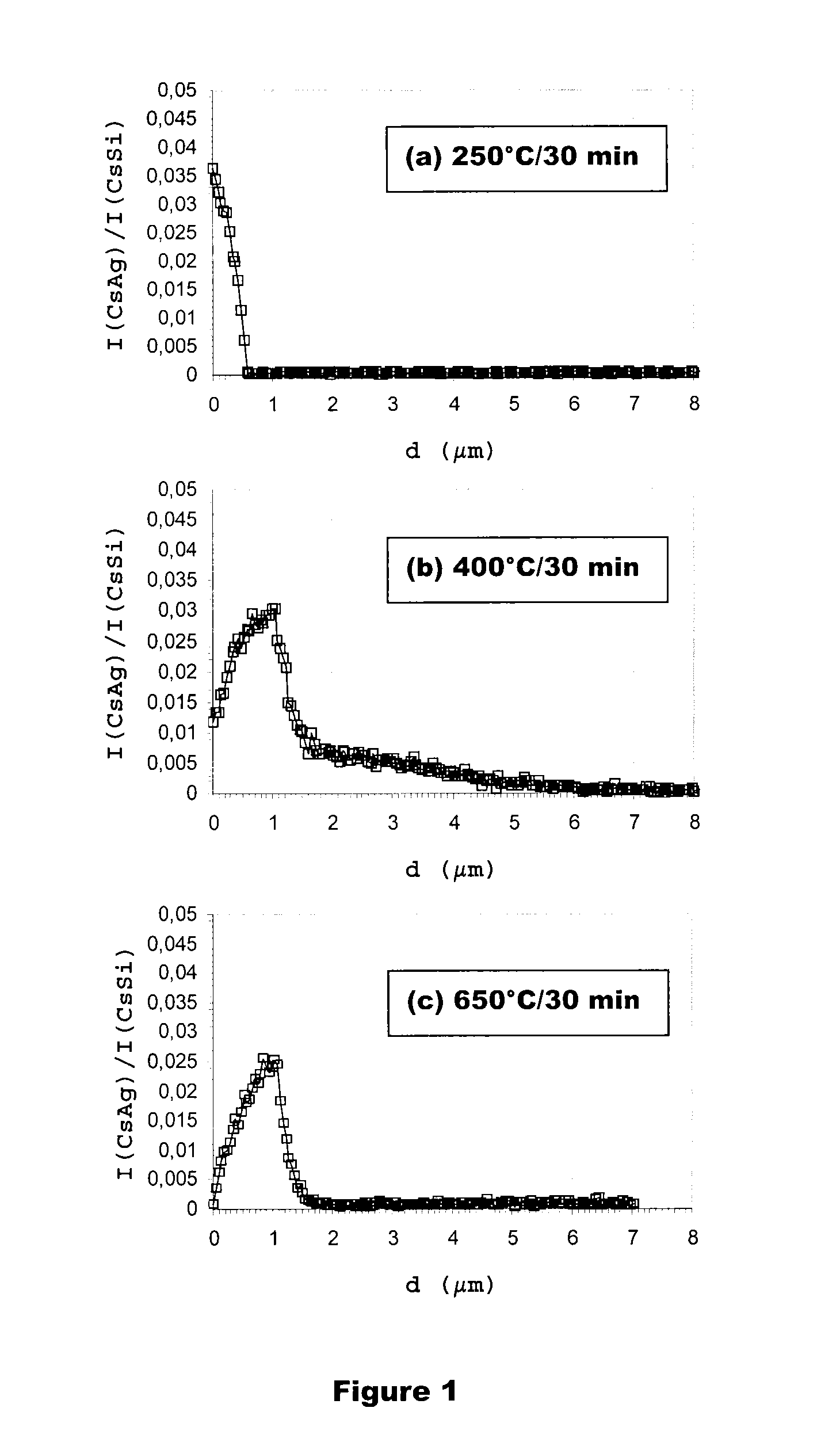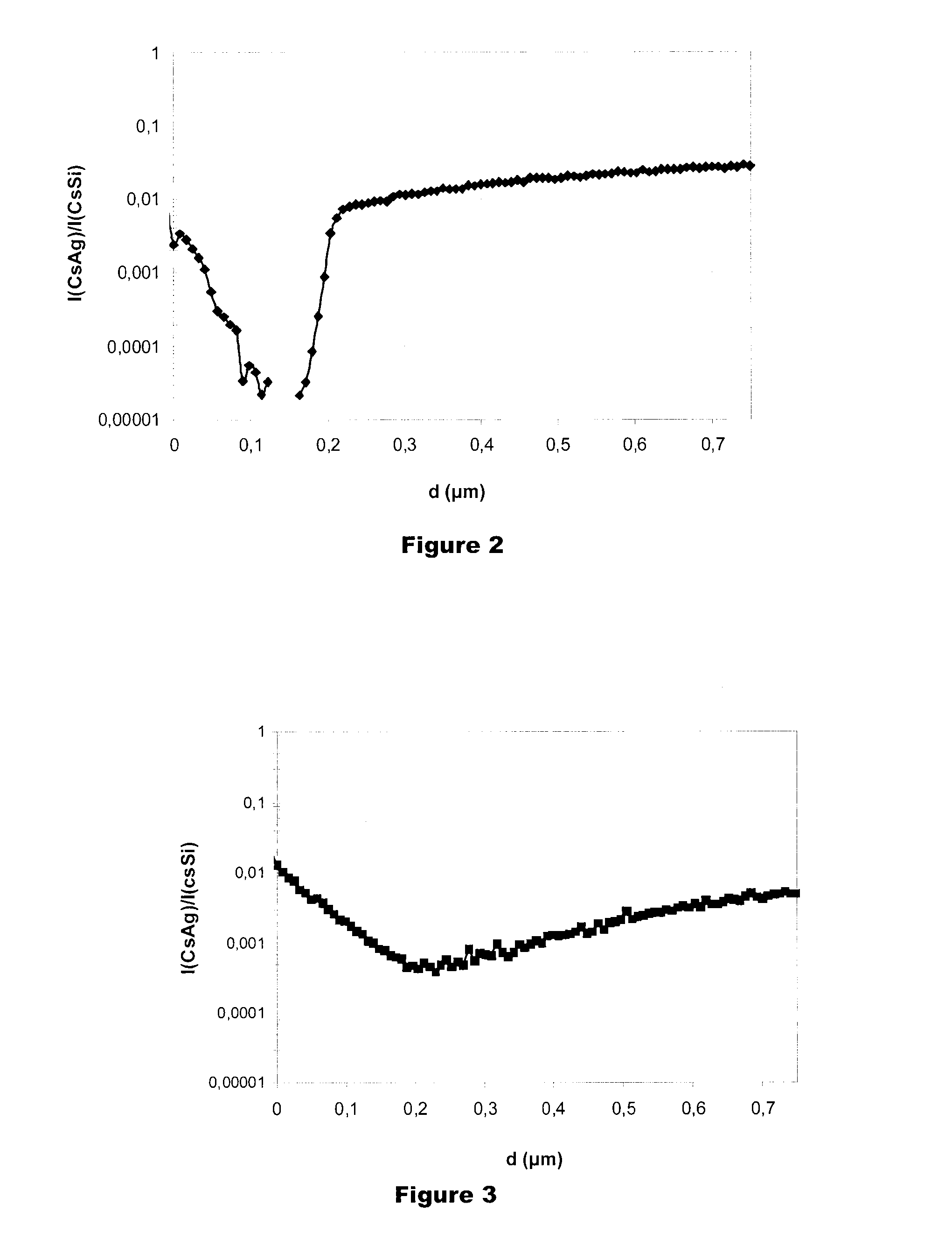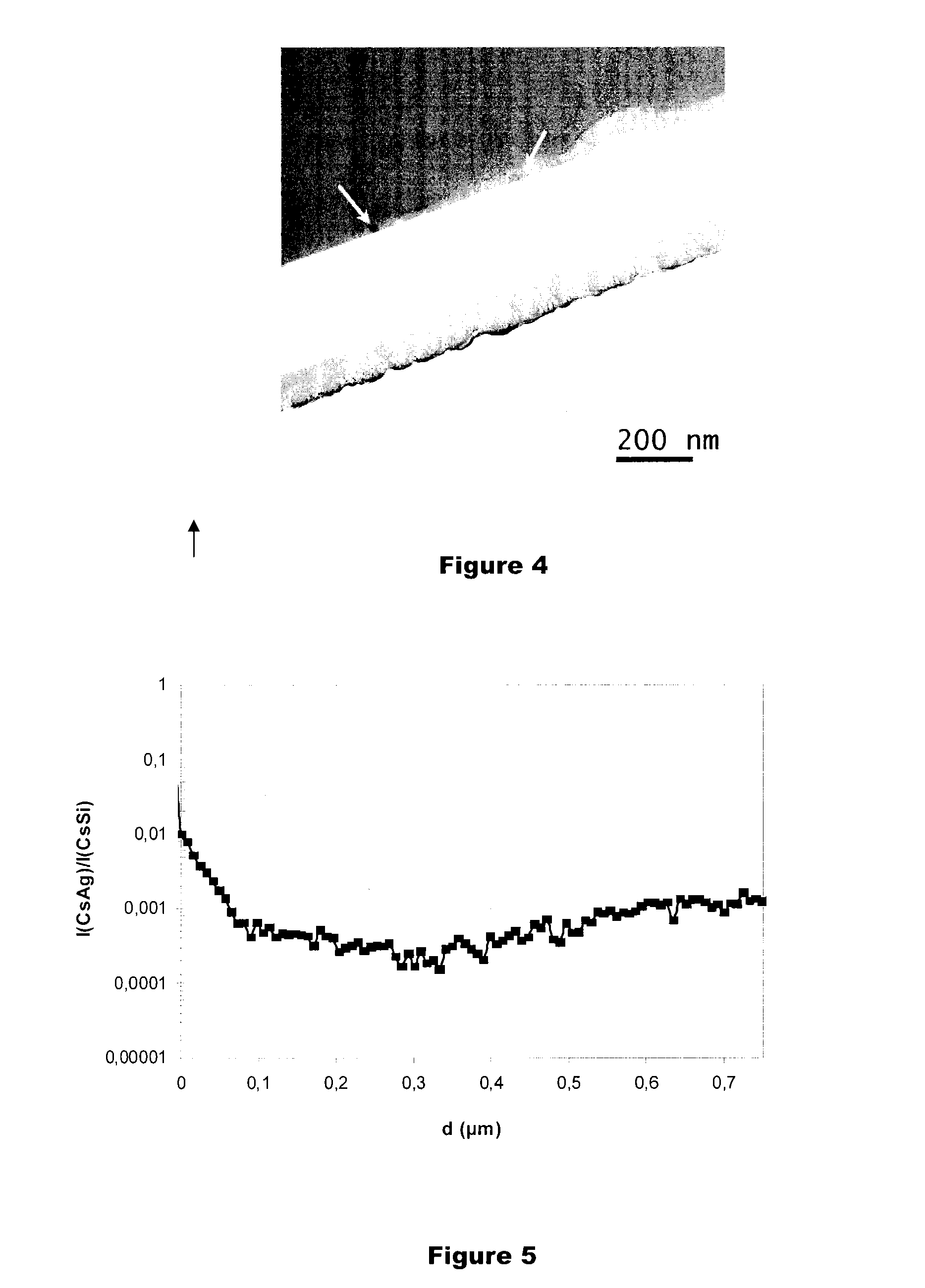Glass article with antimicrobial properties
- Summary
- Abstract
- Description
- Claims
- Application Information
AI Technical Summary
Benefits of technology
Problems solved by technology
Method used
Image
Examples
example 1
Comparative
[0066]Three sheets of clear soda-lime float glass with a thickness of 4 mm and measuring 20 cm×20 cm were washed consecutively in flowing water, deionised water and isopropyl alcohol and then dried. They were then each coated with a thin layer of silver using the method of vacuum deposition also referred to as cathodic magnetron sputtering in a manner known per se using a metallic silver target in an argon atmosphere. The quantity of silver deposited is 40 mg / m2 of surface area treated. To cause the silver to diffuse under the surface, the three glass sheets were then subjected to a thermal treatment in the following conditions (duration and temperature):[0067]sheet 1: 250° C. for 30 minutes;[0068]sheet 2: 400° C. for 30 minutes;[0069]sheet 3: 650° C. for 30 minutes.
[0070]The treated sheets were then cleaned in acid (solution of HNO3 and Fe(NO3)3) to eliminate the excess silver remaining on the surface that has therefore not diffused during the thermal treatment.
[0071]The...
example 2
Comparative
[0077]A sheet of clear soda-lime float glass with a thickness of 4 mm and measuring 20 cm×20 cm was washed consecutively in flowing water, deionised water and isopropyl alcohol and then dried.
[0078]Hydrogen and oxygen were fed into a spot burner in order to generate a flame at the outlet of said burner. A solution containing silver nitrate AgNO3 dissolved in water (aluminium / water dilution ratio by weight=1 / 2419, solution flux=10 ml / min) was fed into the flame. The washed glass sheet was firstly heated in a furnace to a temperature of 600° C. and one of its surfaces was placed under the burner close to the end of the flame at a distance of 130 mm. In order to cover the entire surface of the glass sheet, the spot burner is movable in both spatial directions within the plane of said sheet. The head of the burner was displaced continuously in one of the two directions at a fixed speed of 3 metres per minute and in the other direction perpendicular to the first was displaced ...
example 3
According to the Invention
[0081]A sheet of clear soda-lime float glass with a thickness of 4 mm and measuring 20 cm×20 cm was washed consecutively in flowing water, deionised water and isopropyl alcohol and then dried.
[0082]Hydrogen and oxygen were fed into a linear burner in order to generate a flame at the outlet of said burner. The burner used had a width of 20 cm and had 2 nozzles for supply of the precursor solution. The washed glass sheet was firstly heated in a furnace to a temperature of 600° C. and at this temperature was then passed under the burner located at a distance of 90 mm above the glass sheet at a speed of about 8 m / min. The solution fed into the flame by means of the nozzles contained silver nitrate AgNO3 dissolved in water (silver / water dilution ratio by weight=1 / 3500) and non-ahydrate aluminium nitrate Al(NO3)3.9H2O dissolved in methanol (aluminium / methanol dilution ratio by weight=1 / 20). The total flux of the solution was 360 ml / min. After this treatment the g...
PUM
| Property | Measurement | Unit |
|---|---|---|
| Nanoscale particle size | aaaaa | aaaaa |
| Nanoscale particle size | aaaaa | aaaaa |
| Nanoscale particle size | aaaaa | aaaaa |
Abstract
Description
Claims
Application Information
 Login to View More
Login to View More - R&D
- Intellectual Property
- Life Sciences
- Materials
- Tech Scout
- Unparalleled Data Quality
- Higher Quality Content
- 60% Fewer Hallucinations
Browse by: Latest US Patents, China's latest patents, Technical Efficacy Thesaurus, Application Domain, Technology Topic, Popular Technical Reports.
© 2025 PatSnap. All rights reserved.Legal|Privacy policy|Modern Slavery Act Transparency Statement|Sitemap|About US| Contact US: help@patsnap.com



